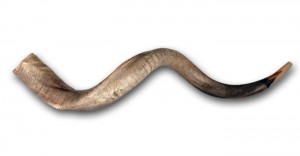How is the seder meal different from all other meals? Of course through the matze and the maror, the gremshelish and the Pesach chocolate cake. But certainly also by the magid, the story teller, who precedes the meal. The book we use is called hagadah, telling, and not se’uda, meal, or mesiba, party. The Torah orders us to tell the story of the exodus from Mitzraim to our children. Targum Onkelos translates the Hebrew higadeta, you will tell, into the arameic utechawi, you will instruct. The essence is not to tell a story, but to teach the meaning.
What is that meaning we should teach our children? The Slonimer rebbe says: ‘In the time that the children of Israel were oppressed by the Pharao, they were not able to speak. They could only sigh, without speaking. And they sighed and screamed and their groaning went up and the Holy One heard their crying. And al this happened while they were oppressed, and their speech was in exile. […] When the children of Israel left Mitzraim, they went out from oppression to redemption and eternal freedom, and then they received again the ability of speech’. The kabbalist Chayyim Vital reads the word Pesach as peh sach, the mouth that speaks. The matze we eat is called lechem oni. The Talmud gives us two meanings: the bread of affliction and the bread that is discussed (from la’anot, bear witness, answer). The kabbalistic foundational work the Zohar reads that Bemidbar (literally ‘in the desert’) , the Hebrew name of the fourth book of the Torah, as ‘by way of the word’. Moshe was heavy of tongue, and claimed not to be able to speak. But once in the desert, the midbar, what also can be read as medaber, speaking, we never hear anything about this ever again. Wajedaber Moshe, Moshe spoke, and from Shemot through Devarim he never ceased speaking.
The kind of speech we are talking about is not: ‘Nice weather today’. ‘Yeah, better than yesterday. Could you pass the apple sauce please?’ Not that there is someting wrong with it. But what is meant here, is speaking freely about what really moves us, without fear for repercussions. What is meant is the free expression of the depth of our soul, the expressing our authentic self without reservations.
That does not mean saying anything that comes to our head without restriction, coldheartedly offending sections of the population, and silencing people with declamations and rhetorics. Nor is it a licence to speak lashon hara, defamation, to stretch or bend the truth if that suits us better, or to compulsively draw all attention to ourselves. All this belongs to the slavery of serving our own ego.
We are ordered to celebrate Pesach, zeman cherutenu, the time of our liberation, as if we ourselves were slaves in Mitzraim. Mitzraim is Egypt. But ito is also a narrow place, a limited consciousness, in which we pursue our ego needs more than objectively necessary. Of course we need to eat, we want a roof over our heads, we want to be safe and to belong, and preferably to be esteemed and respected. Nothing wrong with that. But if we become a slave of this, and spend all our time and energy to get this, and want more, more, more of it, then there is no room any more for our soul, our authentic self, to express itself in the world. Then we get alienated from our self and our environment.
Pesach, that is liberation from the slavery of our limited consciousness, of too much ego, and being able to without fear express freely our divine spark, our authentic self. May it be so, soon, in our days!






